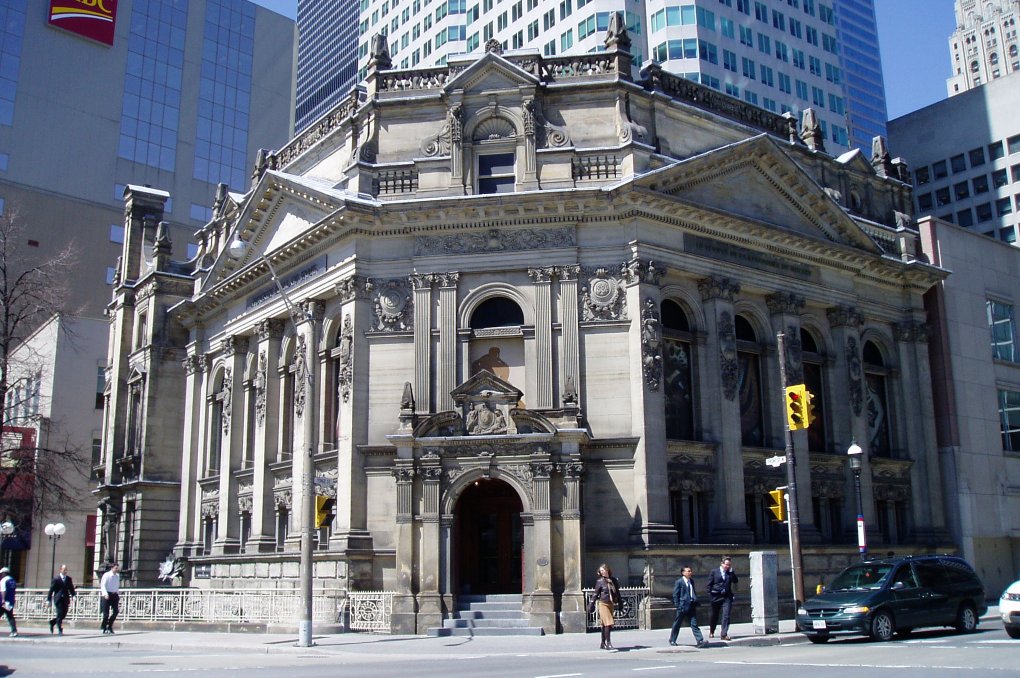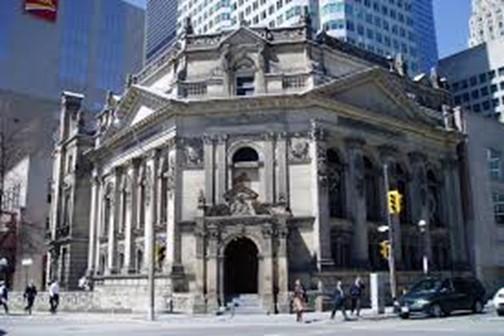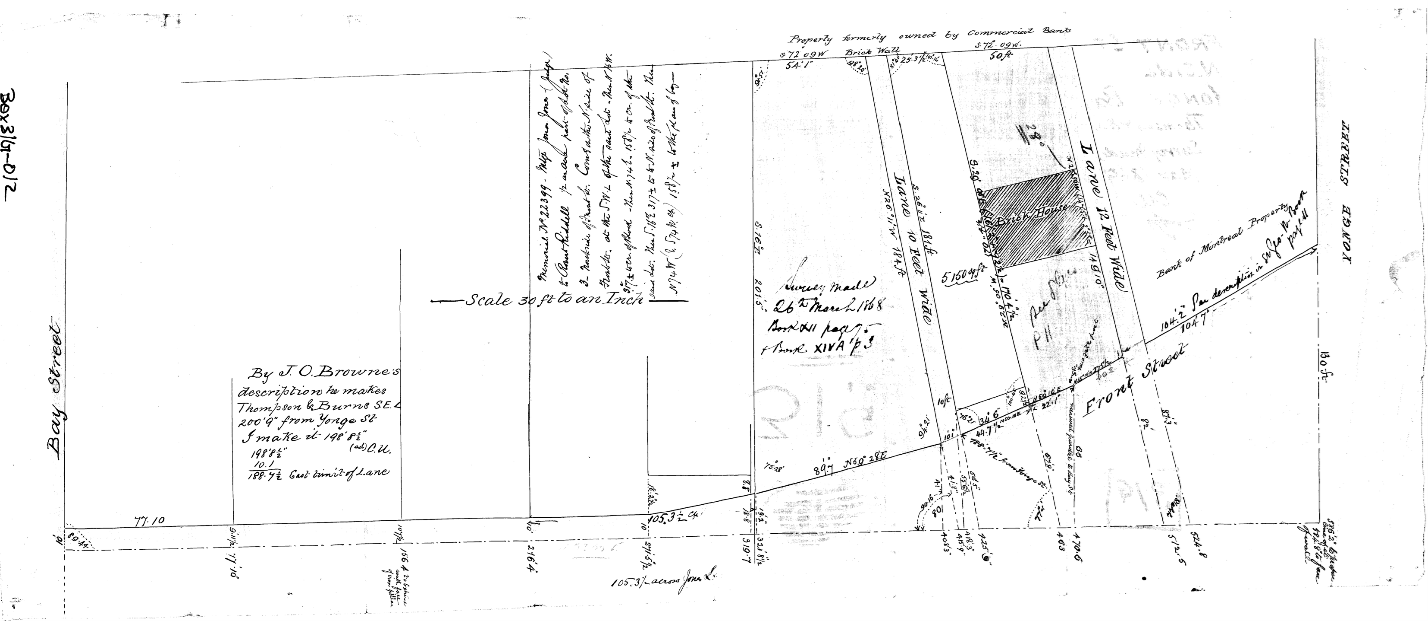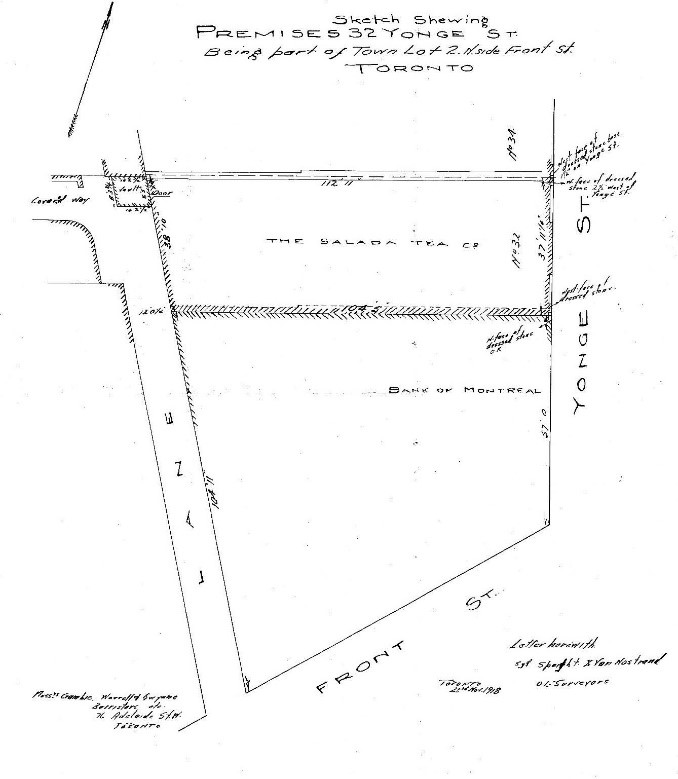The Hockey Hall of Fame: A New Meaning to Checking and Saving at the Bank

It’s wintertime in Toronto, and while the city streets remain busy with workers, commuters, and visitors, the streets seem quieter than in the joyful summer months. The parks are less crowded, the patios are tucked away, and music from outdoor events is on pause. However, many Torontonians find a sense of togetherness through the winter months in their shared passion for the sport of hockey. Restaurants, bars, and homes alike are filled with the sounds of fans cheering for their favourite teams, finding warmth and camaraderie in the game that has long been a Canadian obsession.
It is no secret that hockey is a popular pastime in Canada— for some families, it’s even a way of life. For hockey-crazed fans, the history of the sport is preserved and celebrated at the Hockey Hall of Fame, located in downtown Toronto at the corner of Yonge and Front Streets. The building is exquisite and rich in history, making it the perfect location to honour the game, its players, and its artifacts.
From CNE Grounds to Downtown Toronto
The Hockey Hall of Fame first opened in 1961 on the Canadian National Exhibition (CNE) grounds, but financial challenges prompted the search for a more sustainable location. In 1993, it found its permanent home at the former Bank of Montreal Building, a historic Beaux-Arts building at 30 Yonge Street.
A Building with Deep Roots
| The Bank of Montreal building had long been a fixture in Toronto’s financial district. Established at this site in 1845, the bank’s presence reflected the city’s growing economic significance. The current structure, designed by architects Frank Darling and S. George Curry, replaced an earlier building in 1885 and operated as a financial institution until 1982. After 132 years of financial operations, the building sat vacant for nearly a decade before being repurposed as the Hockey Hall of Fame |  |
Today, visitors to the Hall can appreciate the preserved features of its banking origins, from its arched windows to the marble interiors that take visitors and architectural enthusiasts back to a bygone era. A highlight for visitors to the Hockey Hall of Fame is the chance to see the original Stanley Cup, housed in “Lord Stanley’s Vault”—the former Bank of Montreal vault. This creative repurposing of the vault that once stored the city’s wealth, now holds a different kind of treasure, acting as a nod to the building's former operations and symbolizing the profound connection between hockey and its fans.
The Role of Surveys in Preserving History
Before 30 Yonge Street became the ultimate destination for hockey fans, it had a different kind of team working on it—surveyors. Long before hockey trophies and memorabilia filled its halls, the land beneath 30 Yonge Street was meticulously documented by surveyors.

This 1868 illustration (above) shows the Bank of Montreal's property at the corner of Front and Yonge Streets. A different building would have occupied the land at this time
 |
This 1918 sketch by Speight VanNostrand (left) shows the Bank of Montreal on the same plot of land. By then, the new building had been erected, but the land itself remained unchanged, highlighting the enduring relevance of older surveys. Since the property boundaries, measurements, and dimensions were consistent, the original survey would remain a reliable reference. When no new divisions or acquisitions occur, historical surveys provide a valuable way to verify modern work, offering the most accurate representation of the land's original division. The Hockey Hall of Fame stands as a remarkable blend of Canada’s love for hockey and Toronto’s architectural heritage. By transforming the historic Bank of Montreal building into a shrine for the nation’s favourite sport, the Hall not only preserves the legacy of hockey but also honours the craftsmanship and history that shaped the city. |
From its design to the cleverly repurposed “Lord Stanley’s Vault,” the Hall exemplifies how history can be preserved and reimagined. Historic surveys remind us that even as the world evolves, certain foundations endure—and a closer look often reveals breadcrumbs to the past.
As fans gather to celebrate the game and its legends, the Hockey Hall of Fame serves as a bridge between the past and a tribute to hockey.
References
Hockey Hall of Fame Official Website, Location History and Building Preservation. Accessed January 6, 2025, https://www.hhof.com
Toronto Journey 416. Bank of Montreal Building at 30 Yonge Street. Accessed January 6, 2025. https://www.torontojourney416.com/bank-of-montreal
City of Toronto Archives, Historic Surveys and Fire Insurance Plans. Accessed January 6, 2025. https://www.toronto.ca/city-government/accountability-operations-customer-service/access-city-information-or-records/archives/
Biographical Dictionary of Architects in Canada, Kivas Tully and the Bank of Montreal. Accessed January 6, 2025. http://www.dictionaryofarchitectsincanada.org/architects/view/1874
Image Reference:
Krcmar Surveyors Ltd.
Historic Survey Illustration of 30 Yonge Street. Accessed from the Krcmar Surveyors database, January 6, 2025.
Wikimedia Commons Hockey Hall of Fame Exterior, Photograph by Simon Pulsifer, April 27, 2005. Accessed January 6, 2025. https://commons.wikimedia.org/wiki/File:Hockey_Hall_of_Fame.JPG












